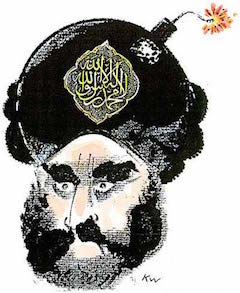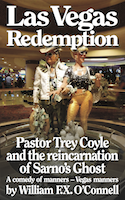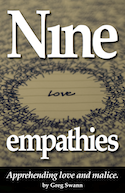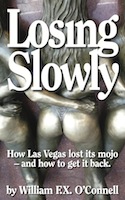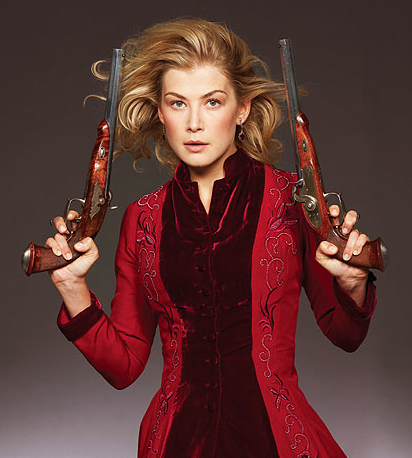
It is common to play Hedda as a neurotic, but I think a more correct reading is that she is a troll, a sprite, a spark of hell’s fire seeking ready tinder on the Earth.
The latter half of the nineteenth century was a time of amazing progress for the West. Average life-expectancy doubled. Infant mortality was halved. The fruits of science and industry were spreading to even the poorest of the poor — hygiene, sanitation, bountiful harvests, rail and sea travel, the telegraph and the telephone, abundant cheap fabrics from the much-maligned mills of England and America. The simple innovation of gaslight, precursor to Edison’s bulb, effectively extended human life by half. The year of 1848 was the year of triumph for the Enlightenment, and monarchies fell all across Europe. The ideals of Voltaire and Jefferson were everywhere ascendant and humanity emerged, dazed and wan, from the prison of tyranny, seeming to dance in the clean, sweet air of liberty.
The latter half of the nineteenth century was a time of joy and beauty and purpose in life and in art, and this is one of the best kept secrets in the history of the West. Marx convinced the world that people who lived twice as long and no longer lost half their children in infancy were not just worse off but much worse off. The philosophers and artists who had brought the Enlightenment to full flower fell into disrepute and images of dark foreboding overtook the leisures of the theoried classes. In the life of the streets there was health, wealth, optimism and ever-expanding horizons. In the drawing rooms of the elites, there was pessimism and dark despair.
Into the belly of that fat contradiction, Henrik Ibsen thrust this dagger:
He who possesses liberty otherwise than as a thing to be striven for, possesses it dead and soulless. So that a man who stops in the midst of the struggle and says, ‘Now I have it,’ — thereby shows that he has lost it.
The dark pessimism of modernity has stained Ibsen beyond all recognition. We are apt to rank Ibsen as a Scandinavian dramatist, and therefore to perceive him in the same grim light as Strindberg or Bergman — closed, cloistered, insular. Soulless and joyless. Certainly this is the impression one would draw from Steve McQueen’s dour Thomas Stockmann; untutored viewers of that film adaptation could emerge from it never having guessed that “An Enemy of the People” is a comedy. Ibsen was not a Scandinavian playwright; the ethnic balkanization of Europe is a manifestation of the twentieth century, not the nineteenth. Ibsen was a European playwright. His most important works were written in Italy and Germany, and his concerns did not stop at Oslo or Norway or the boundaries of Scandinavia.
It is hard for us to imagine a single European culture — even today, with Europe striving to tie itself together economically. But this was one of the unintended consequences of the Enlightenment: the middle and monied classes of Europe had more to unite them than to separate them, despite differences in language and customs and currency. It was precisely this trans-national liberal “bourgeois” culture that Marx and others set about to destroy. And though he was very far from being its champion — it never had a champion — Henrik Ibsen was the chronicler of this culture.
He gave us Europe dissected and laid bare, exposing all that was hidden and shameful and deceitful and corrupt. In plays like “A Doll’s House” and “Ghosts”, he showed us all that was absent from the poses and proprieties of middle-class morality. In “An Enemy of the People” he brought into relief the defects of liberal institutions. “The Wild Duck”, haunting and horrifying, exposes the corrosive influences of fantasy and sentimentality upon idealism. In drawing rooms overlooking fjords and garrets perched over dingy streets, Ibsen reveals every last desperately guarded secret of the nascent bourgeois culture. He is merciless, a vicious Torquemada of liberal society — and later of the human soul. His casts are tiny, his sets minimal, and yet his dialogue is so rich, so loaded with multiple meanings, that he manages to portray enormous issues in miniature.
But this is not why I read Ibsen.
Henrik Ibsen lived in the Age of Invention, and he alone invented the modern drama. From the Greeks to Shakespeare to the repertory theater of the present, the drama has been addicted to certain time-tested, tried-and-true tricks — virtually guaranteed to stun and awe audiences — permitting the playwright to effect his meager sleights of hand. Purloined letters, half-overheard conversations, whispered conspiracies, twins separated at birth, mistaken identities, ad nauseam. We are all familiar with these ploys; without them, there could be no TV soap operas. One of Ibsen’s most important contributions to literature was disposing of all that hokum, forswearing artifices of suspense and giving us real suspense instead. What is there in Shakespeare or Schiller or Scribe to match the raw horror of Judge Brack subtly coercing promises of illicit sex from Hedda Gabler in front of her unsuspecting husband?
Ibsen began his career as an exponent of the Scribean method of “the well-made play”. His earliest works — now all but forgotten — were court dramas or adaptations from the Norse sagas, often in verse. “Lady Inger of Oestraat” might as well have been written by Scribe or Shakespeare. But in his later works, Ibsen threw out the kings and the courtiers. He threw out the verse and the verbal affectations. Most importantly, he threw out the tricks and the traps, the outsized plots and the outworn plottings. He let mere life speak for itself. And to the disgust and outrage and amazement and delight of a dazed and wan Europe, newly liberated, mere life had quite a lot to say.
But this is not why I read Ibsen.
We are redundant when we use the phrase “didactic art”. All true art is didactic and things of beauty that do not enlighten or ennoble or inflame or horrify are not works of art but merely works of ornament. There is nothing at all ornamental in the plays of Henrik Ibsen. As an example, in “The Lady from the Sea”, “Hedda Gabler” and “The Master Builder”, Ibsen brings us three different perspectives on the same one theme: a lover from the past returns and threatens what is presumed to be the blissful domesticity of the present. This is brutal stuff, and Ibsen spares no one his boundless brutality. In “Hedda Gabler”, particularly, the awful contradictions of marriage are portrayed in stark relief. It is common to play Hedda as a neurotic, but I think a more correct reading is that she is a troll, a sprite, a spark of hell’s fire seeking ready tinder on the Earth. In the cramped confines of a suburban home, Ibsen brings us the banality of mediocrity in Tesman and Aunt Juliana, the banality of corruption in Loevborg and Mrs. Elvsted, and the awful banality of pure evil in Judge Brack and Hedda herself.
“The Master Builder” presents another troll in the character of Hilde Wangel (who is seen in childhood in “The Lady from the Sea”), and it is up the reader to decide if she is a troll from hell or from heaven. Ibsen is wrestling with greatness, wrestling with the gods themselves, and if his Bygmester Solness loses in the end, it’s not the tragedy one might suppose. Ibsen pairs ambition with frustration, fertility with sterility, youth with age and a winsome daring with a failed and fractured courage. For me, this is the most beautiful of Ibsen’s plays, in no small part because of the elemental beauty and innocent, animal sexuality of Hilde, and it is the one I would recommend first to those discovering Ibsen.
In these later works, Ibsen bares the very soul of bourgeois culture. He demands that the reader examine his own life in the glare of Hedda’s piercing eyes, or Hilde’s. He leaves the reader no escape, no safe refuge from which to hide from life. The very best art cleanses the soul, and Henrik Ibsen is gentle and gravely considerate as he scrubs you with a brittle brush in the freezing waters of the fjords.
But this is not why I read Ibsen.
I read Ibsen because, uniquely among dramatists, he was able to scale the universe down to the size of a drawing room, to the size of life. The Greeks brought us the universal, but the vessel they brought it in was the universe itself. Shakespeare at his very best is universal, but his courts and pageants permit the reader to imagine that Lear’s dilemma, for example, applies only to Lear. Ibsen’s immense accomplishment was to demonstrate that the universal is universal. Everywhere! In the courts of the glorious and in the hovels of the benighted. In the subvocal battles of the living room as much as in the cacophony of savage warfare. In the soul of a decadent and spiteful Hedda, and in your own soul in your blackest moments. Ibsen scaled the universal down to the size of your own mind, your own soul, and he forbids you to escape acknowledgment of your identity.
Henrik Ibsen confronted the newly liberated Europeans and demanded that they take the next step, liberation from the bonds of their own hypocrisy, their fears, their prejudices and superstitions. Unsurprisingly, Europe — and America, and modernity — turned its back on Ibsen. But truth is that gentle scrubbing from which there is no escape, no safe refuge. And Ibsen is always waiting by the fjord for the day when you, brave reader, dare to brace the waters of his art.
Appendix
The very best English translations of the later works of Ibsen are by Michael Meyer, who also wrote an excellent biography. The Meyer translations are available in the U.S. in paperback under the Washington Square Press imprimatur. [No longer in print, alas. But the poor white, black and brown people who were robbed of the gift of reading by the teacher’s unions bought copies just for you with the money stolen from them by taxation. You can find those volumes waiting for you down at the Public Library. –GSS] In the following chronology, the plays available in the WSP/Meyer translations are denoted by their volume number (e.g., I, IV, etc.). The remainder of the plays can be found with effort in English translations, most notably the fairly clumsy William Archer translations.
Chronology
1828 born March 20
1849 Catiline
1850 The Warrior’s Barrow
1852 St. John’s Eve
1854 Lady Inger of Oestraat
1855 The Feast at Solhaug
1856 Olaf Liljekrans
1857 The Vikings at Helgeland
1862 Love’s Comedy
1863 The Pretenders (II)
1865 Brand (II)
1867 Peer Gynt (IV)
1869 The League of Youth
1873 Emperor and Galilean (I)
1877 The Pillars of Society (II)
1879 A Doll’s House (I)
1881 Ghosts (III)
1882 An Enemy of the People (III)
1884 The Wild Duck (III)
1886 Rosmersholm (IV)
1888 The Lady from the Sea (IV)
1890 Hedda Gabler (II)
1892 The Master Builder (III)
1894 Little Eyolf (IV)
1896 John Gabriel Borkman (I)
1899 When We Dead Awaken (I)
1906 dies May 23



